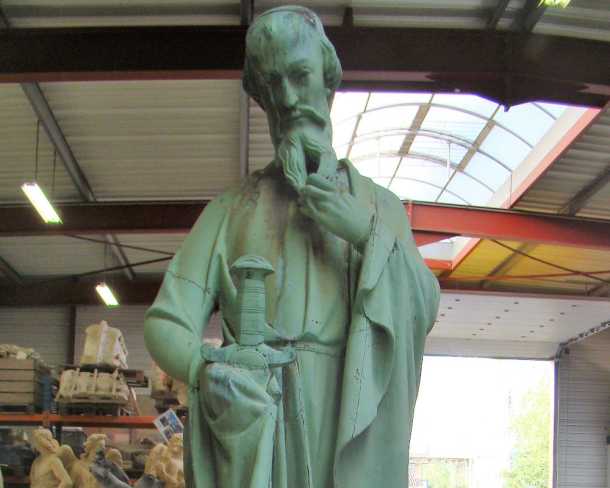The portal of the south transept pays homage to Stephen (Etienne in French), the first Christian martyr. It evokes the name of the first cathedral church in Paris. Built in the 13th century, it was extensively restored in the 19th century.
The Saint-Étienne portal closes the south arm of the transept. Begun by Jean de Chelles, it was finished by Pierre de Montreuil following de Chelles’ death in 1258. The tympanum of the portal tells in bas-reliefs the life of Saint Stephen. Divided into three superimposed horizontal registers, the decoration of the tympanum can be read from bottom to top and from left to right. In the lower register, Saint Stephen preaches Christianity and then he is brought before the judge. The stoning of Saint Stephen and his entombment take place in the middle register. The top register depicts Christ blessing him, surrounded by angels. On the trumeau, the central pillar between the two doors, is the statue of Saint Stephen, a work by Geoffroi-Dechaume reconstructed in the 19th century.
The triple arch of the door is sculpted with twenty-one martyrs crowned by angels, among whom are Saint Denis, Saint Vincent, Saint Eustache, Saint Maurice, Saint Laurent, Saint Clement, Saint George and others whose identity is not determined. On each side of the portal, the three statues of apostles date from the 19th century restorations. They replace the original versions that disappeared during the French Revolution. The high niches above the openwork gallery house the statues of Moses and Aaron.
Above the Saint-Étienne portal, stained glass windows offered by Saint Louis adorn the rose window, 13 meters in diameter. During restoration work in the 19th century, the architect Viollet-le-Duc noticed a drooping of the masonry. In addition, the rose window has suffered over the centuries and during the fire started by insurgents in 1830. To consolidate everything, Viollet-le-Duc picked up the facade and rotated the rose window by 15 degrees on its vertical axis. The master glassmaker Alfred Gérente restored the 13th century stained glass windows and recreated the missing medallions in the spirit of the Middle Ages.
Pierced with an openwork rose in proportion to the large rose window, the gable is located on the top floor of the façade, above the rose window. It illuminates the roof of the transept. A gallery runs behind the balustrade that runs along the roofs of the cathedral from east to west. Two large pyramidions flanked on the gable form the upper parts of the buttresses. Three statues decorate the top, representing Saint Martin and Saint Stephen, and Christ appearing in a dream to Saint Martin who, according to legend, gives his mantle to the poor.



